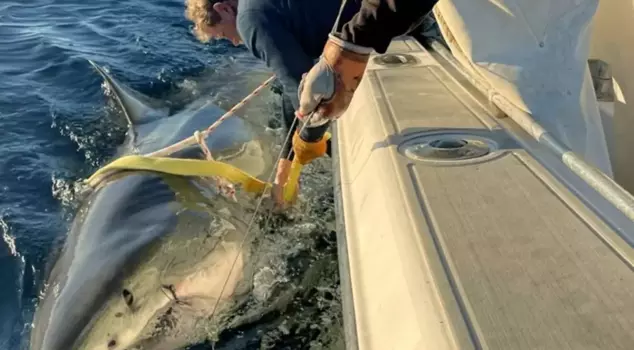
10.10.2025 15:12
The largest white shark ever caught in the Atlantic Ocean, named 'Contender', has astonished the scientific community. This giant shark, measuring 4.2 meters in length and weighing 750 kilograms, is 30 years old. The last signal from Contender, which was tagged off the coast of Florida in January, was received near the Gulf of St. Lawrence in northern Canada.
```html
The largest great white shark ever caught in the Atlantic Ocean has surprised scientists.
This giant shark, named "Contender," is 4.2 meters long, weighs about 750 kilograms, and is 30 years old.
The marine research team OCEARCH tagged Contender off the coast of Florida in January.
The satellite device sends a signal when the shark's dorsal fin breaks the surface of the water.
The last signal was received near the Gulf of St. Lawrence in northern Canada.
This made it one of the largest sharks ever detected in the north.
According to researchers, Contender has been storing energy by feeding on seals during the summer and fall.
OCEARCH founder Chris Fischer said, "These giants feed in the north to survive the winter, then head south."
Fischer noted that Contender's pressure on seals is also beneficial to the ecosystem:
"When sharks hunt seals, seals consume less fish.
If there are no sharks, seals will deplete all the fish in the sea."
Fischer stated that great white sharks can maintain their body heat but need plenty of food to survive in the cold.
"Just like animals that live outside in the winter; they won't freeze as long as they can find food."
Contender surfaced briefly off the coast of Canada on September 29.
According to Fischer, this discovery is promising for the great white species, which has come close to extinction due to overfishing in the past.
"In the 1970s, the shark population had dropped to 9%," Fischer says.
Experts aim to solve where great white sharks mate thanks to Contender.
"No mating grounds have been identified anywhere yet. If Contender reveals this, it will be a first," says Fischer.
Researchers are preparing to track the shark's movements, especially in the spring of 2026.
Initial estimates suggest the southeastern U.S. as a possible mating area.
```